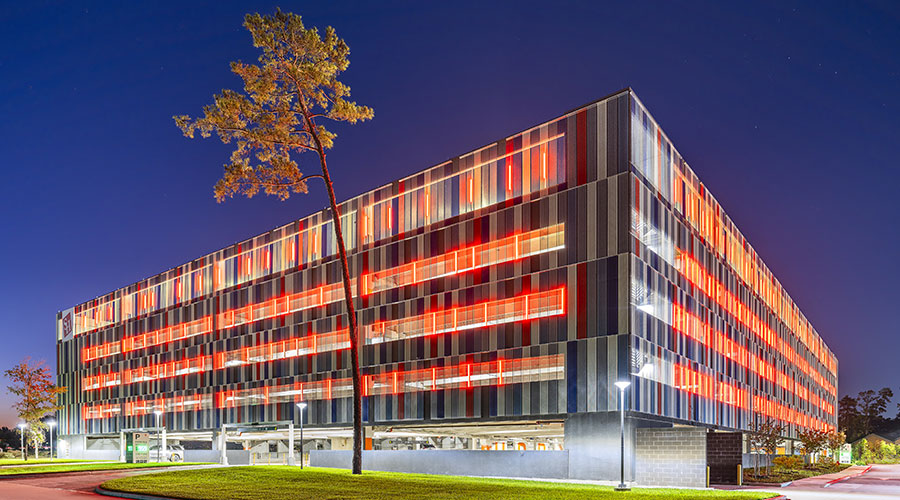Lighting Controls 101: Understand Switching, Dimming, and LEDs
Knowing the basics of lighting controls, and how lighting impacts human health, is essential for facility managers.
Lighting controls are systems and devices that raise/lower light output (dimming) for or turn on/off (switching) lamps and luminaires. These outputs support visual needs, energy management, or both by ensuring the right amount of light is provided only where and when needed.
With the advent of LED lighting and the falling cost of networking, two other potential outputs are growing in usefulness. By independently dimming colors or white LEDs with different shades of white light, products can adjust color output. By connecting control points within a network, data can be produced.
The input is manual or automatic. Human interaction is the basis of manual control, typically used for visual needs. A control signal is the basis for automatic control, typically used for energy management. Automatic inputs may be based on occupancy, daylight level, time event, or signal from another building system.
The combination of inputs and outputs define the major control strategies, which include manual control, scheduling, occupancy sensing, daylight harvesting, and institutional task tuning (high-end trim).
Between the input and output, a logic circuit or microprocessor, also called a lighting controller, decides whether to adjust the lights and by how much. The lights controlled by each output are called a control zone. Control signals may flow through line- or low-voltage wiring or come via wireless communication, or a hybrid approach may be used. For communication and true interoperability, all equipment must be designed to a common protocol or employ a gateway, which may be a device or software function.
Lighting controls are undergoing a digital revolution alongside the LED revolution, offering viable advanced control options for LED upgrades. Facility managers should become aware of what controls can do, match them to what the space needs, and consider the many available options.
Light and Health
Our understanding of the relationship between light and circadian health is developing rapidly. Research has identified four main characteristics that influence light’s impact on circadian health: intensity, spectrum, timing, and duration.
While best practices are still emerging, it appears likely lighting controls will play a role in circadian lighting by:
• Adjusting intensity, or the cumulative amount of vertical light falling on the eye’s photoreceptors throughout the day
• Providing an optimum emission spectrum (wavelengths associated with colors) at the right times
• Delivering the right intensity spectrum at the right times and lengths of time.
Related Topics:













